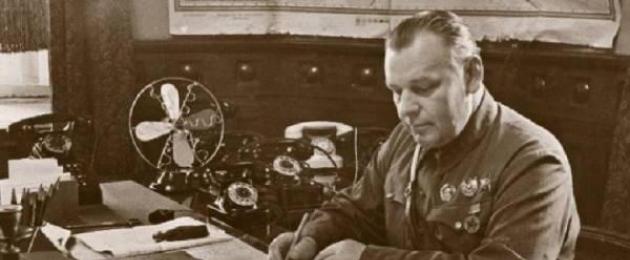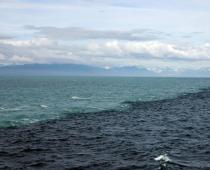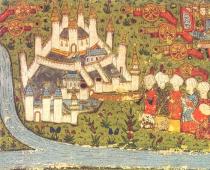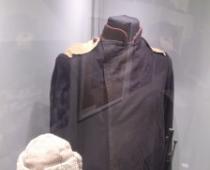In June 2000, by decision of the Presidium of the Supreme Court of Russia, the former head of Stalin's bodyguard, Lieutenant General Nikolai Vlasik, was posthumously rehabilitated, whose biography formed the basis of this article. How did a man end up in the dock, who for almost half a century was part of the leader's inner circle?
A guy from a Belarusian village
Nikolai Sidorovich Vlasik came from a poor peasant family who lived in the village of Bobynichi in Western Belarus. He was born on May 22, 1896. Having barely finished three classes of the parochial school, the boy lost his parents and was forced to take care of his daily bread himself. As a result, Nikolai began his career at the age of 13 - first as an assistant at a construction site, then as a bricklayer, and after the owner went bankrupt, he got a job as a loader at the factory.
When the first broke World War, Nikolai Vlasik, who had reached military age by that time, was mobilized and participated in the battles as part of the 167th Ostroh Infantry Regiment. For his heroism, by order of command, he was awarded the St. George Cross and promoted to non-commissioned officer. Shortly thereafter, Vlasik was appointed commander of one of the platoons of the 251st Infantry Regiment, stationed in Moscow. In this position, he met the October Revolution.
Young officer of the Cheka
In the biography of Nikolai Vlasik, emphasis is usually placed on the fact that his political choice of those years was due primarily to belonging to the social classes. Russian society. It's hard to disagree with this. It is unlikely that this semi-literate young man delved into the abstruse torii of Marx, most likely, he internally felt that life gives him a chance to escape from insignificance. His first step on the chosen path was joining the ranks of the RCP (b).
Nikolai Vlasik began the service of the new government in the ranks of the Moscow police, then participated in the battles of the Civil War, was wounded near Tsaritsyn and, finally, became an employee of the Cheka, a body that had truly unlimited powers and left a gloomy memory of itself.
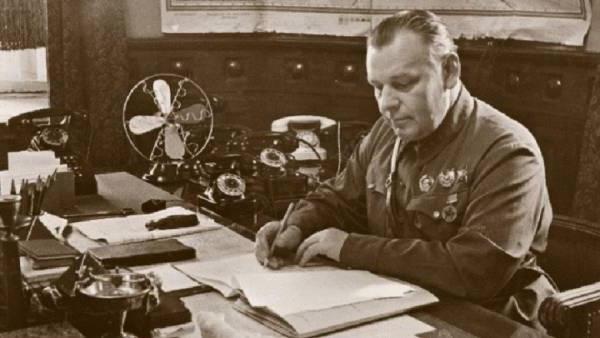
Creation of a government security service
Since 1919, he served in the central apparatus of the Cheka, headed by F. E. Dzerzhinsky, and took an active part in the operations that became part of the infamous Red Terror, which claimed the lives of hundreds of thousands of Russians suspected of disloyalty to the Bolshevik regime. Soon after the transformation of the Cheka into the OGPU, Vlasik took the post of senior authorized operational department.
A new turn in the life of the operative took place in 1927, and the impetus for him was a bomb thrown by unknown persons into the commandant's office building on Lubyanka. In this regard, a special structure was created to ensure the security of the Kremlin, members of the government, as well as all institutions subordinate to the OGPU. The well-established operative Nikolai Sidorovich Vlasik was appointed head of this department.
Starting a new activity
According to his own recollections, among other duties assigned to him, special importance was attached to the protection of I.V. Stalin. In previous years, the security of the first persons of the state was put out of hand badly. Even Fanny Kaplan, committed on August 30, 1918, did not serve as a lesson.
Before Vlasik entered his new position, Stalin was guarded by the only person who accompanied him everywhere - the Lithuanian Yusis. In addition, in the 1920s, the future "father of peoples" led an extremely ascetic lifestyle and was content with only the bare necessities in everyday life. Suffice it to say that at his dacha near Moscow there was not only the proper staff, but even an ordinary telephone, and he ate exclusively sandwiches brought from Moscow.
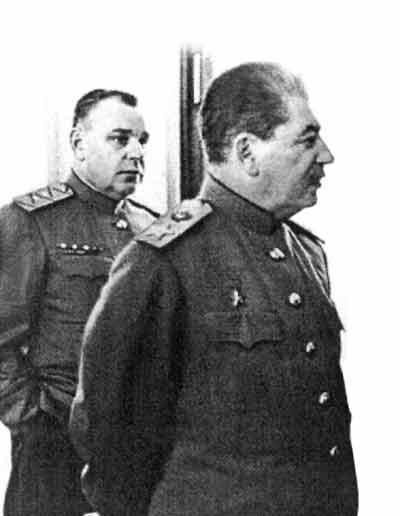
Taking urgent action
Taking on the duties of the head of Stalin's security, Nikolai Vlasik began precisely with organizing the life of the head of state. Despite the objections of his ward, he organized the delivery of fresh and high-quality products from a nearby state farm, which immediately came to the disposal of an experienced cook who had undergone a thorough check before his appointment. An extensive staff of servants was also formed, providing adequate comfort in all areas of the leader's life.
Following this, on the initiative of Nikolai Vlasik, a whole network of Stalinist dachas was created both in the Moscow region and located in the southern regions of the country, where well-trained personnel were ready to receive the leader at any time and create the most comfortable conditions for him to rest and work. All these country residences were included among the most important state objects, and were guarded with the utmost care.
Ideas brought to life
Acting not only as the head of security, but also as Stalin's personal bodyguard, Nikolai Vlasik developed a whole system of measures aimed at ensuring the safety of the first person of the state during official events, trips around the country and international meetings. Being, in fact, a semi-literate person, whose entire education was reduced to 3 classes of a parochial school, Vlasik showed outstanding abilities as the head of one of the most important departments, whose work was aimed at protecting state security.
It is curious to note that it was he who came up with the idea to carry out the passage of the first persons of the state in a cavalcade, made up of absolutely identical-looking cars. At the same time, only the most trusted persons of the guard know which of them is the leader. It was such a simple, but very effective scheme that saved the life of L. I. Brezhnev in 1969 during the assassination attempt on him.

Leader's Children's Educator
A few years after taking office, Vlasik became an indispensable person for Stalin. His role in the leader’s life especially grew after Stalin’s second wife, Nadezhda Alliluyeva, committed suicide in November 1932 (her photo with her daughter Svetlana is in the article), and he took care of the children left without a mother: Vasily, Svetlana and adopted son
As Nikolai Sidorovich later wrote in his memoirs, Vasily, who was uncontrollable by nature, created most of the problems for him, while Svetlana and Artyom were quiet and obedient children. Not wanting to cause unnecessary unrest to Stalin, he did his best to smooth out information about the adventures of his unbridled son in his reports, but every year it became more and more difficult to do this.
Nikolai Vlasik, whose personal life was entirely subordinated to the interests of the service, practically did not know family joys. In 1934, he married Maria Semyonovna Kovbasko, who took his last name and gave birth to his daughter Nadezhda a year later. However, the spouses saw each other only in fits and starts, since Nikolai Semyonovich himself was inseparably under Stalin and even always spent the night in a room next to the leader’s bedroom.
War years and beyond
During the Great Patriotic War Nikolai Vlasik ensured the security of the heads of state participating in the conferences of the countries participating in the anti-Hitler coalition. He completed this task with his usual professionalism, for which he was awarded a number of high government awards.
In 1946, the previously existing structure of the NKVD was transformed into the Ministry of Internal Affairs of the USSR, and on its basis the Main Directorate of Security was created - a state body with an annual budget of 180 million rubles and a staff of tens of thousands of employees. Despite the fact that Nikolai Vlasik became the head of this huge department, life was preparing the most unpleasant surprise for him in those years.
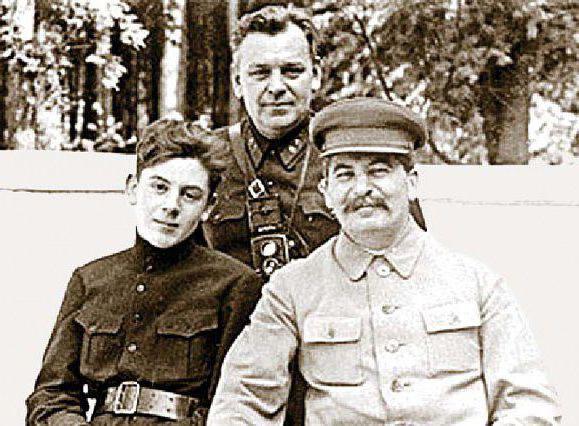
Dangerous foe
The fact is that, being for many years in close proximity to Stalin and enjoying his trust, he could influence the adoption of various important decisions, including those related to that during the period of his service he made many dangerous enemies.
The main and most powerful of them was Lavrenty Beria, the head of the USSR special services (the photo is in the article). He, like no one else, was interested in getting rid of Vlasik, and for a long time he collected dirt on him, preparing to strike a sudden blow.
He made his first attempt in 1948. Then the commandant of the "Near Dacha" Fedoseev, who was arrested by him, slandered Vlasik, showing during interrogation that he was going to poison Stalin. However, this did not work - the leader did not believe in the betrayal of his bodyguard.
New accusation
Fatal for Nikolai Vlasik was 1952, when real facts abuses committed by the staff of many government dachas that were empty for a long time. In addition to the fact that they regularly organized revels that turned into real orgies, food and material values were plundered in huge quantities there. Of course, the responsibility fully fell on the head of the department, in whose subordination were the persons who compromised themselves.
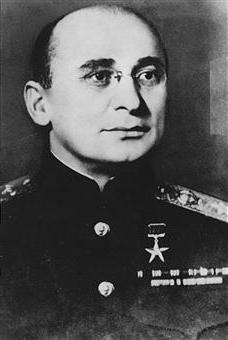
Beria caught on to this material and very soon found witnesses who confirmed that Vlasik himself repeatedly relaxed in this way, after which he left with a trunk full of all kinds of gourmet food. Such information already looked quite plausible.
The end of a brilliant career
As a result, on April 29, 1952, the head of the Security Department and Stalin's personal bodyguard was removed from his post and sent to the Ural city of Asbest as deputy head of the local forced labor camp. But this was, of course, only the first step into the abyss that opened before him.
In December of the same year, he was arrested in connection with the "doctors' case", because, being the head of the security department, he was responsible for the reliability of the medical staff, against whom far-fetched accusations were then made. Already on January 17 of the following year, a meeting of the Military Collegium of the Supreme Court of the USSR was held, which found him guilty of abuse of office and sentenced him to exile for a period of 10 years. Shortly after Stalin's death, the sentence was commuted to 5 years with serving the sentence in one of the districts of the Krasnoyarsk Territory.
last years of life
After the 20th Congress of the CPSU, which took place in March 1956 and condemned Stalin's personality cult, many victims of his misanthropic regime began to go free. Vlasik Nikolai Sidorovich was also released in those days, whose biography was closely connected with the name of the debunked leader. By decision of the judicial board, he was pardoned and released. His criminal record was removed, but without the restoration of the former military rank of lieutenant general and without the return of government awards.
Vlasik spent the last years of his life in Moscow. He died on June 18, 1967. He was fully rehabilitated only in June 2000, when by the decision of the Supreme Court of the Russian Federation the sentence handed down in 1955 was canceled "due to the lack of corpus delicti".
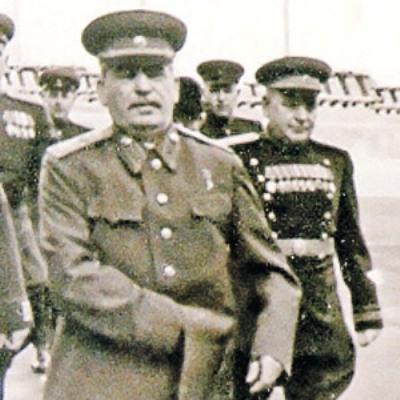
What did Vlasik really suffer for?
Nikolai Sidorovich, whose personal life became the subject of study by many biographers, was practically thrown out by Stalin as waste material. What is the reason for such an act? Perhaps it lies in suspicion, painfully aggravated towards the end of the leader's life. It is also possible that Stalin really wanted to punish Vlasik for drunken revelry and embezzlement of state funds. But it is most likely that, changing at that time the former leaders for young employees, he came to the conclusion that it was time to get rid of the head of his personal security. However, there could be other reasons that we do not know about. The life of Nikolai Vlasik still holds many mysteries.
We are talking about Nikolai Sidorovich Vlasik, who is mentioned by everyone who has ever met Stalin. He was the head of his personal guard, a man very close to the leader. He and Stalin's assistant Poskrebyshev communicated with the leader daily, if not hourly. And at the same time they were both deposed from their posts. The events of that time are very mysterious. To this day, we do not know why the people closest to Stalin, who were unconditionally loyal to him, were removed from his entourage. Apparently, Nikolai Zenkovich was right when he noted that many "Stalin's wolves" died at that time. "But sacrificing such wolves as Poskrebyshev and Vlasik, Stalin did not know that for the first time in his life he had become an instrument of someone else's will." Preparing to eliminate the leader from the political arena, "Stalin's comrades-in-arms" removed from his entourage the most devoted to him people. It was not for nothing that Vlasik, when he was removed from his post, noticed that now the leader would not last long. Meanwhile, the biography of Vlasik, his activities are not known to everyone. And there were almost no publications on this problem in the USSR. And only now in the works of Nikolai Zenkovich “Secrets of the outgoing century”, Leonid Mlechin “Chairmen of the KGB. Declassified Fates”, V. Samsonova “Stalin’s Daughter”, O. Gordievsky, To Andrew “Intelligence Operations from Lenin to Gorbachev” and in some others we can find information about the life of Stalin’s temporary worker Nikolai Sidorovich Vlasik. These works were used in the preparation of the article.
From the verdict of the military collegium of the Supreme Court of the USSR of January 17, 1955:
“Vlasik Nikolai Sidorovich to be deprived of the rank of lieutenant general ... to be exiled for 10 years to a remote area of \u200b\u200bthe USSR. By virtue of Article 4 of the Decree of the Presidium of the Supreme Soviet of the USSR of March 27, 1953 on amnesty, to reduce this punishment by half, that is, to 5 years, without loss of rights. Deprive Vlasik of medals ... File a petition before the Presidium of the Supreme Soviet of the USSR to deprive Vlasik of government awards: three orders of Lenin, four orders of the Red Banner, the Order of the Red Star, the Order of Kutuzov 1st degree and the medal "XX Years of the Red Army". The verdict is final and not subject to appeal.
And not a word about the fact that Lieutenant General Vlasik was already convicted in 1952, and for “treason against the Motherland”, in particular, because in 1948 he and Poskrebyshev did not report to Stalin about Lidia Timashuk’s letter about the alleged “villainous killing of Zhdanov ". In the study of Peter Deryabin “Guardians of the Kremlin. From the Okhrana to the 9th Directorate "it is reported that, having learned about this," the leader went into an indescribable rage, calling Poskrebyshev "Vlasik's drinking buddy, who sold himself for half a liter," and Vlasik "a drunkard and a parasite." Both were immediately fired. In 1955, the case of "doctors-poisoners" sunk into oblivion. Therefore, the article "on treason" was replaced with "abuse of official position." According to all the laws of that time, he should have been rehabilitated. But it was very unprofitable for someone that the disgraced and demoted general was in Moscow. In a word, riddles, riddles, riddles ... But Vlasik's personality was still extraordinary. N. Zenkovich and A. Avtorkhanov note that in Russian and Soviet armies this was the only case when an illiterate (only 2 classes of a parochial school), a simple soldier, bypassing all sorts of courses and schools, reached the rank of lieutenant general. He also broke the record for the duration of service with Stalin. According to P. Deryabin, Nikolai Sidorovich was Stalin's first personal bodyguard. This type was a slavishly devoted ignorant peasant who at the beginning did not have even a vague idea about the organization of security. He began his service to Stalin as an unknown soldier of the Red Army, who in the post-revolutionary Petrograd and Moscow periods faithful dog slept at the Master's door. He was a short, puny little man. Stalin could not stand in his environment anyone who was taller than him. He ran a huge business. First of all, the Main Directorate of Protection was entrusted with the task of not only ensuring the safety of the leader, but also the elimination of his opponents - both existing and potential. According to Deryabin, Vlasik was subordinate to the secretariat, four departments - planning and economic and organizational, personnel department, communications and operational departments, several departments represented by the commandant's office of the Kremlin, Guard No. 1 (personally the leader). Guard #2 (all others), Health Zone Management North Caucasus, the coast of the Black Sea, the Crimea, the Kremlin’s Medical and Sanitary Services Administration, a school for security guards, a physical training center, etc. Four first deputies helped Vlasik manage such a complex economy. In addition, Vlasik had the right, when solving his problems, to apply to any department of the KGB and the Ministry of Defense, to the Ministry of Internal Affairs. And all of them were obliged to follow his instructions immediately. The number of personnel of the Main Security Directorate in Moscow alone amounted to 16 thousand soldiers and officers. In fact, Vlasik had the First Division named after Dzerzhinsky and the Second Division of Internal Troops at his disposal. Yes, and the court Kantemirovskaya division was intended for the purposes of protection and was also ready to fulfill any instruction of the Stalinist guard. “If we take all of the above into account,” notes Pyotr Deryabin, “it turns out that in the period from 1947 to 1952, there were approximately over 50 thousand people in Stalin’s bodyguards.” For the purposes of his protection, a wide agent network was subordinated, numbering over three thousand people - covert employees of various special services. One thousand two hundred soldiers and officers of the regiment special purpose carried round-the-clock duty on the territory of the Kremlin. This is the "household" in charge of the general. And although Vlasik was elementarily illiterate, rude and uncultured, nevertheless, he was a cunning and subtle intriguer, a hypocrite and a saint. V. Samsonova reports that Vlasik was the only person surrounded by Stalin and his guards, who served almost until the death of the leader and was not expelled. The exile followed almost on the eve of the death of the leader. True, there was also a nanny Bychkova, who was patronized by Svetlana, the daughter of the leader. Sometimes thunder and lightning fell on Vlasik. Svetlana recalls how her father yelled at Vlasik and the commandants: “Parasites! Profit here, I know how much money you have through the sieve!” But in reality, he didn’t know anything, intuitively felt that huge funds were flying away ... General Vlasik disposed of millions on his behalf - for construction, for special train trips - but his father could not even really figure out where, how much, to whom ... ". The leader knew the weaknesses and vices of his main guardian well. He often scolded him for the fact that the head of the guard stole and sold food and wine from the leader's reserves to the side. But Vlasik still, obviously, suited him. Vlasik himself considered himself almost the closest person to Stalin, and, being incredibly illiterate, rude, stupid, but noble, he went so far as to dictate to cultural and art figures "the tastes of Comrade Stalin", since he believed that he knows and understands them well. And the leaders “listened and followed this advice. Not a single festive concert at the Bolshoi Theater or St. George's Hall was held without Vlasik's permission, ”recalls Svetlana Alliluyeva. Until 1952, Vlasik enjoyed the full confidence of the leader. True, in 1946 he stumbled. He was accused of wanting to poison the leader and removed from his post. But then it passed ... Stalin personally figured out the testimony of one of the employees of the MGB and again reinstated the general in his post. The real trouble struck in 1952. Malenkov “revealed blatant outrages - taking advantage of the lack of control, the faithful bodyguards of the Kremlin elite at the master's dachas devoured black caviar and balyks intended for nomenklatura stomachs by centners! In response to the question: “Where did you look?” - Vlasik explained that in view of his illiteracy, it was difficult for him to engage in financial and economic activities ... As for those cognacs and balychki that were brought from Stalin's dacha for his personal consumption, Nikolai Sidorovich replied: “Yes, there were such cases. But sometimes I paid money for these products. True, there were cases when they were given free of charge, ”Nikolai Zenkovich informs readers. As it turned out later, the general was shamelessly stealing. After his arrest, whole warehouses of precious porcelain services, crystal, gold jewelry, carpets, pianos, and cameras were found in his dacha. He took food and wine from the master's kitchen, which he frankly admitted. He was also a drunkard, and too indifferent to the female sex. Naturally, during the period of orgies, he chatted a lot of unnecessary things, which was recorded by the relevant authorities.
The following data speaks of the scope of the activity of the head of the leader's guard. During a search in his house, they found a trophy service for 100 people, 112 crystal glasses, 20 crystal vases, 13 cameras, 14 photographic lenses, five rings and a "foreign accordion". So it was written in the protocol of the search. Apparently, the MGB officer, who was not quite intelligent, had in mind the accordion, which he recorded with a “foreign accordion”. And all this was acquired illegally without payment. After the end of the Potsdam Conference in 1945, he “brought three cows, a bull and two horses out of Germany, of which he gave his brother a cow, a bull and a horse, his sister a cow; niece - a cow. The cattle was delivered to the Slonim district of the Baranovichi region by train of the Security Department of the Ministry of State Security of the USSR, ”the same Zenkovich reports.
It should be noted that theft on the largest scale was characteristic of the leaders of punitive bodies. For ordinary employees of the department, things confiscated from the repressed were transferred to special stores, where they were sold at bargain prices. Self-activity in this case could not be. In this regard, Samsonova, the author of a book about Stalin's daughter, notes that Svetlana Alliluyeva more than once spoke with contempt about the overweight generals surrounded by her father, who stole millions, and about Vasily Stalin's huge estate with stables and kennels built at public expense, and about the "arts" of General Vlasik, and about many others. But there was no point in judging Vlasik only for theft. Well, who could be surprised by the process of theft! The matter, as they say, is worldly ... But a political background was needed. She was quickly found. To make Vlasik a "traitor to the motherland" in his pocket "found" secret document , which he allegedly wanted to take out of Stalin's dacha. They also remembered that he gave his cohabitants passes to the stands of Red Square and government theater boxes, and connections with persons who did not inspire political confidence, in conversations with whom he disclosed secret information "concerning the protection of the leaders of the party and government." They did not forget that he kept official documents in his apartment that were not subject to disclosure. In a word, Lavrenty Pavlovich worked hard. Vlasik was immediately removed from his post. Stalin by that time was, as it were, in a vacuum. On this occasion, A. Avtorkhanov noted: “In the decisive moments, there was no one near Stalin: neither the“ old guard ”of Stalin - the Molotovites, nor the“ most faithful squire ”Poskrebyshev, nor the life guard Vlasik, nor the devoted son Vasily, nor even a personal doctor Vinogradov. The death of Stalin guards and regulates Beria with the constant presence of his three accomplices - Malenkov, Khrushchev, Bulganin, who betrayed both Stalin and Beria, and themselves. Of course, as already noted, the main fault was that Vlasik hid a letter from Lydia Timashuk, according to which Mikoyan, Voroshilov, Molotov were to become the main accused. The removal of Vlasik from office should be considered in the context of preparing a conspiracy against Stalin. Felix Chuev, author of the book Molotov. A semi-powerful ruler, ”reports in connection with such reasoning:“ I was visiting Natalya Poskrebysheva ... Vlasik's daughter Nadia came to her. Her father, Stalin's head of security, was arrested in December 1952. When they took him away, he said that Stalin would soon be gone, hinting at a conspiracy ... Poskrebyshev was removed five days before Stalin's death ... ”But the leader, of course, did not know about this. Molotov, in conversations with Chuev, put forward another version. “Without women, too, does not happen. Here Poskrebyshev and Vlasik got caught on this. I was, so to speak, on the sidelines. Disgraced. I was surprised: there is no Poskrebyshev. Stalin removed him, but did not imprison him, because he did not spend state money. And Vlasik spent at the expense of protection on this matter ... ". For all this, the general was removed from his post, expelled from the party, and appointed to the lieutenant colonel's position as deputy head of a forced labor camp in the city of Asbest in the Urals. Pyotr Deryabin, in the study I mentioned, reports that when Vlasik left for the Urals, a whole group of officers came to see him off. Among them was Stalin's son Vasily, Vlasik's old drinking buddy. He was in a state of intoxication, and when the train moved away from the platform, he shouted: “They will kill him, they want to kill him! ". By "them" he meant members of the Politburo, and by "him" he meant his father. All the officers who saw off Vlasik, of course, except for Vasily Stalin, were immediately dismissed upon their return from the station. We got to Vasily a little later. Further, Deryabin and eyewitnesses report that in the middle of the summer of 1952, Vlasik, who was several years younger than his master, became a complete ruin. He secretly left Sverdlovsk and went to Moscow, made an attempt to see Poskrebshev, but Beria's employees guarding the dacha did not let him in. “Then Vlasik,” writes Deryabin, “went to the Kremlin in the hope of meeting with Stalin. And again, his guards drove him away. Later he was taken right at the Kremlin gates and sent to the Lubyanka.” And in December 1952, the disgraced general was arrested for "treason." It was dangerous to keep Vlasik in the wild. The conspiracy was entering its final stages. After Stalin's death, they were in no hurry to let him out of prison, although the case no longer "pulled" for treason. "Doctors-poisoners" have long been justified. And again Vlasik was tried in 1955, in the month of January. Apparently, the Kremlin rulers were afraid of something. The disgraced guard of the leader knew too much about them. But another article was "picked up" for him - abuse of official position. Soon he came under an amnesty and returned to Moscow. I applied for rehab several times. But every time he was refused, although Zhukov and Vasilevsky interceded for him. Both, as we remember, Marshals of the USSR. So ended his life in obscurity, the main Stalinist oprichnik Nikolai Sidorovich Vlasik.
And why has Vlasik still not been rehabilitated and the personal archive confiscated from him has not been opened?
STALIN'S BODYGUARD. THE REAL STORY OF NICHOLAS VLASIK. Nikolai Sidorovich Vlasik spent a quarter of a century next to Stalin, protecting the life of the Soviet leader. Without his bodyguard, the leader lived for less than a year.
From the parochial school to the Cheka, Nikolai Vlasik was born on May 22, 1896 in Western Belarus, in the village of Bobynichi, into a poor peasant family. The boy lost his parents early and a good education could not count. After three classes of the parochial school, Nikolai went to work. From the age of 13 he worked as a laborer at a construction site, then as a bricklayer, then as a loader at a paper mill. In March 1915, Vlasik was drafted into the army and sent to the front. During the First World War, he served in the 167th Ostroh Infantry Regiment, and was awarded the St. George Cross for bravery in battle. After being wounded, Vlasik was promoted to non-commissioned officer and appointed commander of a platoon of the 251st infantry regiment, which was stationed in Moscow. During October revolution Nikolai Vlasik, a native of the very bottom, quickly decided on his political choice: together with the entrusted platoon, he went over to the side of the Bolsheviks. At first he served in the Moscow police, then he participated in the Civil War, was wounded near Tsaritsyn. In September 1919, Vlasik was sent to the bodies of the Cheka, where he served in the central apparatus under the command of Felix Dzerzhinsky himself. Master of Security and Life Since May 1926, Nikolai Vlasik served as a senior authorized officer of the Operational Department of the OGPU. As Vlasik himself recalled, his work as Stalin's bodyguard began in 1927 after an emergency in the capital: a bomb was thrown into the commandant's office building on Lubyanka. The operative, who was on vacation, was recalled and announced: from that moment on, he was entrusted with the protection of the Special Department of the Cheka, the Kremlin, government members at dachas, walks. Particular attention was ordered to be given to the personal protection of Joseph Stalin. In spite of sad story assassination attempt on Lenin, by 1927 the protection of the first persons of the state in the USSR was not particularly thorough. Stalin was accompanied by only one guard: the Lithuanian Yusis. Vlasik was even more surprised when they arrived at the dacha, where Stalin usually spent his weekends. One commandant lived at the dacha, there was no linen, no dishes, and the leader ate sandwiches brought from Moscow. Like all Belarusian peasants, Nikolai Sidorovich Vlasik was a solid and well-to-do man. He took up not only the protection, but also the arrangement of Stalin's life. The leader, accustomed to asceticism, at first was skeptical about the innovations of the new bodyguard. But Vlasik was persistent: a cook and a cleaner appeared at the dacha, food supplies were arranged from the nearest state farm. At that moment, there was not even a telephone connection with Moscow at the dacha, and it appeared through the efforts of Vlasik. Over time, Vlasik created a whole system of dachas in the Moscow region and in the south, where well-trained personnel were ready at any moment to receive the Soviet leader. It is not worth talking about the fact that these objects were guarded in the most careful way. The security system for important government facilities existed even before Vlasik, but he became the developer of security measures for the first person of the state during his trips around the country, official events, and international meetings. Stalin's bodyguard came up with a system according to which the first person and the people accompanying him move in a cavalcade of identical cars, and only the bodyguards know which one the leader is driving in. Subsequently, such a scheme saved the life of Leonid Brezhnev, who was assassinated in 1969. Within a few years, Vlasik turned into an indispensable and especially trusted person for Stalin. After the death of Nadezhda Alliluyeva, Stalin entrusted his bodyguard with the care of the children: Svetlana, Vasily and his adopted son Artyom Sergeyev. Nikolai Sidorovich was not a teacher, but he tried his best. If Svetlana and Artyom did not cause him much trouble, then Vasily was uncontrollable from childhood. Vlasik, knowing that Stalin did not give up to children, tried, as far as possible, to mitigate the sins of Vasily in reports to his father. But over the years, the “pranks” became more and more serious, and it became more and more difficult for Vlasik to play the role of a “lightning rod”. Svetlana and Artyom, as adults, wrote about their "tutor" in different ways. Artyom Sergeev in “Conversations about Stalin” spoke about Vlasik: “His main duty was to ensure the safety of Stalin. This work was inhuman. Always the responsibility of the head, always life on the cutting edge. He knew very well both friends and enemies of Stalin ... What kind of work did Vlasik have in general? It was work day and night, there was no 6-8-hour working day. All his life he had work, and he lived near Stalin. Vlasik’s room was next to Stalin’s room ... ”For all the years that Vlasik was responsible for Stalin’s life, not a single hair fell from his head. At the same time, the head of the leader’s guard himself, judging by his recollections, took the threat of assassination very seriously. Even in his declining years, he was sure that the Trotskyist groups were preparing the assassination of Stalin. In 1935, Vlasik really had to cover the leader from bullets. During a boat trip in the Gagra region, fire was opened on them from the shore. The bodyguard covered Stalin with his body, but both were lucky: the bullets did not hit them. The boat left the firing zone. As it turns out, there was a misunderstanding. The border guards were not informed about Stalin's boat trip, and they mistook him for an intruder. Subsequently, the officer who ordered the shooting was sentenced to five years. Abuse of cows During the Great Patriotic War, Vlasik was responsible for ensuring security at the conferences of the heads of the countries participating in the anti-Hitler coalition and coped with his task brilliantly. For the successful holding of the conference in Tehran, Vlasik was awarded the Order of Lenin, for the Crimean Conference - the Order of Kutuzov I degree, for the Potsdam Conference - another Order of Lenin. But the Potsdam Conference became a pretext for accusations of misappropriation of property: it was alleged that after its completion, Vlasik took various valuables from Germany, including a horse, two cows and one bull. Subsequently, this fact was cited as an example of the irrepressible greed of the Stalinist bodyguard. Vlasik himself recalled that this story had a completely different background. In 1941, the Germans captured his native village of Bobynichi. The house where my sister lived was burned down, half the village was shot, the sister's eldest daughter was driven away to work in Germany, the cow and the horse were taken away. My sister and her husband went to the partisans, and after the liberation of Belarus they returned to their native village, from which little was left. Stalin's bodyguard brought cattle from Germany for relatives. Was it abuse? If you approach with a strict measure, then, perhaps, yes. However, Stalin, when this case was reported to him, sharply ordered that further investigation be stopped. Opala In 1946, Lieutenant General Nikolai Vlasik became the head of the Main Security Directorate. He did not fight for power, but at the same time he made a huge number of enemies. Compromising evidence on Stalin's bodyguard was scrupulously collected, drop by drop undermining the leader's confidence in him. In 1948, the commandant of the so-called "Near Dacha" Fedoseev was arrested, who testified that Vlasik intended to poison Stalin. But the leader again did not take this accusation seriously: if the bodyguard had such intentions, he could have realized his plans a long time ago. In 1952, by decision of the Politburo, a commission was established to verify the activities of the Main Directorate of the Ministry of State Security of the USSR. This time, extremely unpleasant facts have surfaced that look quite plausible. On April 29, 1952, on the basis of these materials, Nikolai Vlasik was removed from his post and sent to the Urals, to the city of Asbest, as deputy head of the Bazhenov forced labor camp of the USSR Ministry of Internal Affairs. In December 1952, he was arrested in connection with the Doctors' Plot. He was blamed for the fact that he ignored the statements of Lydia Timashuk, who accused the professors who treated the first persons of the state of sabotage. Vlasik himself wrote in his memoirs that there was no reason to believe Timashuk: "There was no data discrediting the professors, which I reported to Stalin." On March 5, 1953, Joseph Stalin passed away. Even if we discard the dubious version of the murder of the leader, Vlasik, if he had remained in his post, he could well have extended his life. When the leader became ill at the Near Dacha, he lay for several hours on the floor of his room without help: the guards did not dare to enter Stalin's chambers. There is no doubt that Vlasik would not have allowed this. After the death of the leader, the "case of doctors" was closed. All of his defendants were released, except for Nikolai Vlasik. By a decree of the Presidium of the Supreme Soviet of the USSR of December 15, 1956, Vlasik was pardoned with the removal of a criminal record, but in military rank and the awards were not restored. “I didn’t have a single moment in my soul angry at Stalin.” He returned to Moscow, where he had almost nothing left: his property was confiscated, a separate apartment was turned into a communal one. Vlasik knocked on the thresholds of offices, wrote to the leaders of the party and government, asked for rehabilitation and reinstatement in the party, but was refused everywhere. Secretly, he began to dictate memoirs in which he talked about how he saw his life, why he did certain things, how he treated Stalin. “After Stalin’s death, such an expression appeared as“ the cult of personality ”... If a person who is the leader of his affairs deserves the love and respect of others, what’s wrong with that ... The people loved and respected Stalin. He personified a country that he led to prosperity and victories, wrote Nikolai Vlasik. - Under his leadership, a lot of good things were done, and the people saw it. He enjoyed great prestige. I knew him very closely... And I affirm that he lived only for the interests of the country, the interests of his people.” “It is easy to accuse a person of all mortal sins when he is dead and can neither justify nor defend himself. Why, during his lifetime, no one dared to point out to him his mistakes? What hindered? Fear? Or were there no such errors that should have been pointed out? What Tsar Ivan IV was formidable, but there were people who cared for their homeland, who, not fearing death, pointed him to
The head of security, Nikolai Sidorovich Vlasik, was an avid photographer and many of his pictures even got into the newspapers. "Proximity to the body" of the leader allowed Vlasik to make a huge amount unique photos. And more often informal.
Until recently, private pictures of the leader of all nations were not available to the general public. About ten years ago, the surviving archives of Vlasik were "opened" by his relatives and even his diaries were published. But the rest of the materials about Stalin's life confiscated by Lubyanka, and in huge quantities, including photos, videos, and audio, are not yet available.
Let's start in order, with a biography.
Nikolai Sidorovich Vlasik (May 22, 1896, Bobynichi village, Slonim district, Grodno province (now Slonim district, Grodno region) - June 18, 1967, Moscow) - figure in the security agencies of the USSR, head of security of I. Stalin, lieutenant general.
Member of the RCP(b) since 1918. He was expelled from the party after being arrested in the doctors' case on December 16, 1952.
Born into a poor peasant family. By nationality - Belarusian. He graduated from three classes of a rural parochial school. He began his career at the age of thirteen: a laborer for a landowner, a digger at railway, a laborer at a paper mill in Yekaterinoslav.
In March 1915 he was called up for military service. He served in the 167th Ostroh Infantry Regiment, in the 251st Reserve Infantry Regiment. For bravery in the battles of the First World War he received the St. George Cross. In the days of the October Revolution, being in the rank of non-commissioned officer, along with a platoon, he went over to the side of Soviet power.
In November 1917, he entered the service of the Moscow police. Since February 1918 - in the Red Army, a participant in the battles on the Southern Front near Tsaritsyn, was an assistant company commander in the 33rd working Rogozhsko-Simonovsky infantry regiment.
In September 1919, he was transferred to the bodies of the Cheka, worked under the direct supervision of F. E. Dzerzhinsky in the central office, was an employee of a special department, a senior authorized officer of the active department of the operational unit. From May 1926 he became a senior commissioner of the Operational Department of the OGPU, from January 1930 - assistant to the head of the department in the same place.
In 1927, he headed the Kremlin's special guards and became the de facto chief of Stalin's guards. At the same time, the official name of his position was repeatedly changed due to constant reorganizations and reassignments in the security agencies. From the mid-1930s - head of the department of the 1st department (protection of senior officials) of the Main Directorate of State Security of the NKVD of the USSR, from November 1938 - head of the 1st department in the same place. In February - July 1941, this department was part of the People's Commissariat for State Security of the USSR, then it was returned to the NKVD of the USSR. From November 1942 - First Deputy Head of the 1st Department of the NKVD of the USSR. 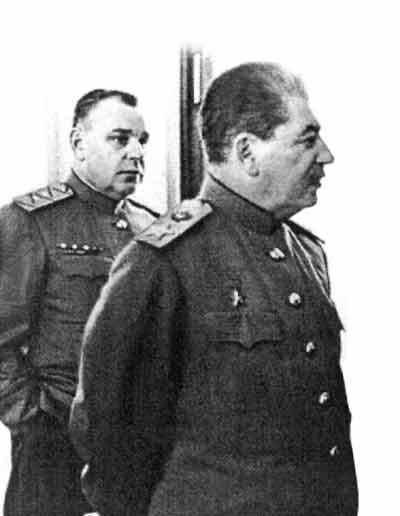
From May 1943 - head of the 6th department of the People's Commissariat of State Security of the USSR, from August 1943 - first deputy head of this department. Since April 1946 - Head of the Main Directorate of Security of the Ministry of State Security of the USSR (since December 1946 - Main Directorate of Security).
In May 1952, he was removed from the post of head of Stalin's security and sent to the Ural city of Asbest as deputy head of the Bazhenov forced labor camp of the USSR Ministry of Internal Affairs.
December 16, 1952 Vlasik was arrested. He was accused of embezzling large sums of government money and valuables, "indulging pest doctors", abuse of office, etc. L. Beria and G. Malenkov are considered the initiators of Vlasik's arrest. “Until March 12, 1953, Vlasik was interrogated almost daily (mainly in the case of doctors). The audit found that the accusations against the group of doctors are false. All professors and doctors have been released from custody. V Lately the investigation into the Vlasik case is being conducted in two directions: the disclosure of secret information and theft material assets... After Vlasik's arrest, several dozen documents marked "secret" were found in his apartment ... While in Potsdam, where he accompanied the USSR government delegation, Vlasik was engaged in hoarding ... "(Certificate from the criminal case).
On January 17, 1953, the Military Collegium of the Supreme Court of the USSR found him guilty of abuse of office under especially aggravating circumstances, sentencing him under Art. 193-17 p. "b" of the Criminal Code of the RSFSR to 10 years of exile, deprivation of the rank of general and state awards. Sent to serve exile in Krasnoyarsk. Under an amnesty on March 27, 1953, Vlasik's term was reduced to five years, without loss of rights. By a decree of the Presidium of the Supreme Soviet of the USSR of December 15, 1956, Vlasik was pardoned with the removal of a criminal record. He was not restored in military rank and awards.
On June 28, 2000, by a decision of the Presidium of the Supreme Court of Russia, the 1955 verdict against Vlasik was canceled and the criminal case was dismissed "due to the lack of corpus delicti".
Vlasik lasted the longest in the protection of Stalin. At the same time, almost all everyday problems heads of state. In essence, Vlasik was a member of the Stalin family. After the death of N.S. Alliluyeva, he was also a teacher of children, an organizer of their leisure, an economic and financial manager.
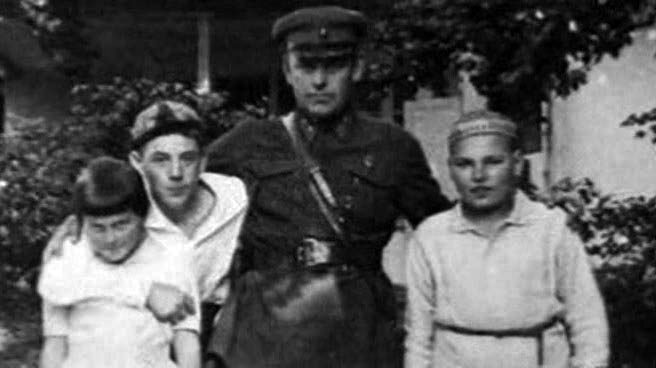
Stalin's summer residences, along with the security staff, maids, housekeepers and cooks, were also subordinate to Vlasik. And there were many of them: a dacha in Kuntsevo-Volynsky, or “Near Dacha” (in 1934-1953 - the main residence of Stalin, where he died), a dacha in Gorki-tenths (35 km from Moscow along the Uspenskaya road), old manor along the Dmitrovsky highway - Lipki, a dacha in Semenovsky (the house was built before the war), a dacha in Zubalovo-4 ("Far Dacha", "Zubalovo"), 2 dacha on Lake Ritsa, or "Dacha on the Cold River" (at the mouth of the river. Lashupse, which flows into Lake Ritsa), three dachas in Sochi (one is not far from Matsesta, the other is behind Adler, the third is before Gagra), a dacha in Borjomi (Liakan Palace), a dacha in New Athos, a dacha in Tskhaltubo, a dacha in Myusery (near Pitsunda), a dacha in Kislovodsk, a dacha in the Crimea (in Mukholatka), a dacha in Valdai.
"He N. S. Vlasik] simply prevented Beria from getting to Stalin, because his father would not let him die. He would not wait a day outside the door, like those guards on March 1, 1953, when Stalin “wakes up” ... "- daughter of N. S. Vlasik Nadezhda Vlasik in the Moskovsky Komsomolets newspaper dated 05/07/2003
Unfortunately, this interview turned out to be for Nadezhda Nikolaevna sad consequences. Here is how an employee of the Slonim Museum of Local Lore tells this story:
“The personal belongings of Nikolai Sidorovich were transferred to the museum by his adopted daughter, his own niece Nadezhda Nikolaevna (there were no children of her own). This lonely woman spent her whole life seeking the rehabilitation of the general.
In 2000 Supreme Court The Russian Federation dropped all charges against Nikolai Vlasik. He was posthumously rehabilitated, restored to his rank, and the awards were returned to his family. These are three orders of Lenin, four orders of the Red Banner, orders of the Red Star and Kutuzov, four medals, two honorary Chekist badges.
- At that time, - says Irina Shpyrkova, - we contacted Nadezhda Nikolaevna. We agreed on the transfer of awards and personal belongings to our museum. She agreed, and in the summer of 2003 our employee went to Moscow.
But everything turned out like a detective story. An article about Vlasik was published in Moskovsky Komsomolets. Many called Nadezhda Nikolaevna. One of the callers identified himself as Alexander Borisovich - a lawyer, a representative of the State Duma deputy Demin. He promised to help the woman return Vlasik's priceless personal photo archive.
The next day he came to Nadezhda Nikolaevna, supposedly to draw up documents. Asked for tea. The hostess left, and when she returned to the room, the guest was suddenly about to leave. She didn’t see him anymore, like 16 medals and orders, the general’s gold watch ...
Nadezhda Nikolaevna had only the Order of the Red Banner, which she transferred to the Slonim Museum of Local Lore. And also two pieces of paper from my father's notebook.
Here is a list of all the awards that disappeared from Nadezhda Nikolaevna (except for one Order of the Red Banner):
George Cross 4th class
3 orders of Lenin (04/26/1940, 02/21/1945, 09/16/1945)
3 orders of the Red Banner (08/28/1937, 09/20/1943, 11/3/1944)
Order of the Red Star (05/14/1936)
Order of Kutuzov, 1st class (02/24/1945)
Medal of the twentieth years of the Red Army (22.02.1938)
2 badges Honorary Worker of the Cheka-GPU (12/20/1932, 12/16/1935)
In his memoirs, Vlasik wrote:
“I was severely offended by Stalin. After 25 years of impeccable work, without any reprimand, but only encouragement and awards, I was expelled from the party and thrown into prison. For my boundless devotion, he gave me into the hands of enemies. But never, not for a single minute, no matter what state I was in, no matter what bullying I was subjected to while in prison, I did not have anger in my soul against Stalin.
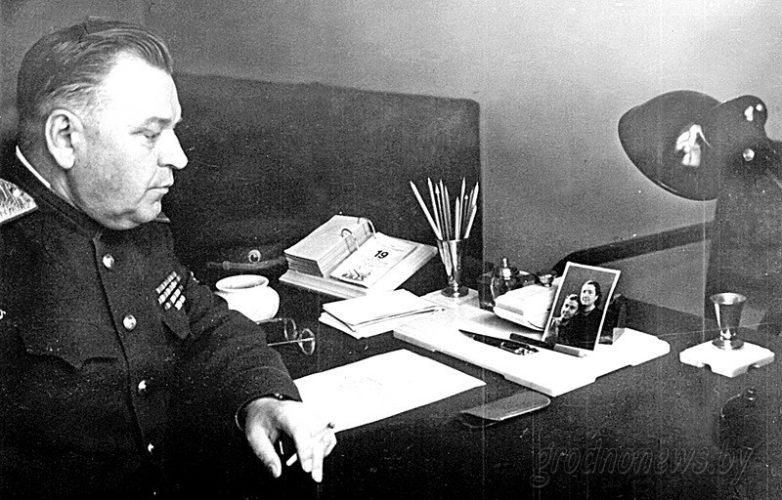
According to his wife, Vlasik was convinced until his death that L.P. Beria “helped” Stalin to die.
Well, now let's move on to Vlasik's activities as a photographer. Here is what he writes in his memoirs:
“A few days before the November holidays in 1941, Comrade Stalin called me and said that it was necessary to prepare the premises of the Mayakovskaya metro station for holding a solemn meeting.
There was very little time, I immediately called the deputy chairman of the Moscow Council, Yasnov, and agreed to go with him to Mayakovsky Square. Arriving and inspecting the metro station, we made a plan. It was necessary to build a stage, get chairs, arrange a rest room for the presidium and organize a concert. We quickly organized all this, and at the appointed time the hall was ready. Coming down the escalator to the Ceremonial Meeting, Comrade Stalin looked at me (I was wearing a bekesha and hat) and said: “Here you have a star on your hat, but I don’t have it. Still, you know, it’s uncomfortable - the commander-in-chief, but he’s not dressed in uniform, and there’s not even a star on his cap, please get me a star.
When Comrade Stalin left for home after the meeting, a star shone on his cap. In this cap and in a simple overcoat without any insignia, he performed at the historic parade on November 7, 1941. I managed to photograph him successfully, and this photo was distributed in large numbers. The soldiers attached it to the tanks and with the words: “For the Motherland! For Stalin!" - went into fierce attacks.
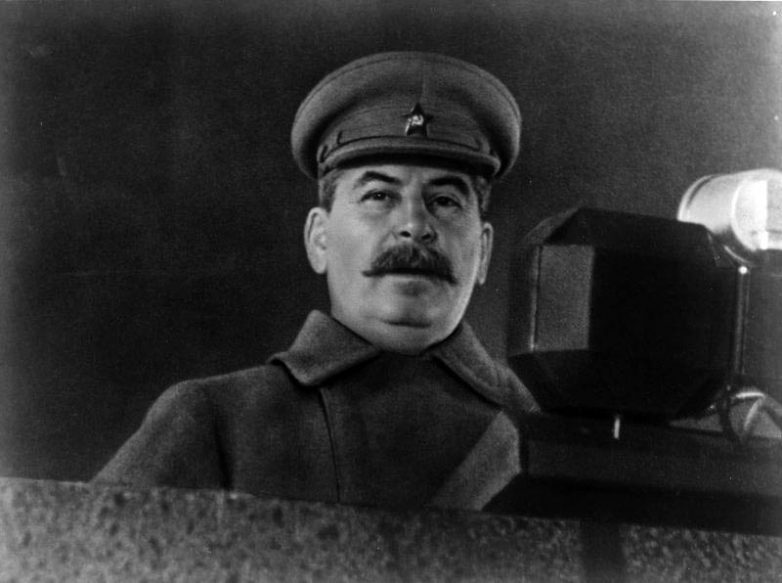 The very famous photo of N. Vlasik, taken on November 7, 1941, during the parade on Red Square.
The very famous photo of N. Vlasik, taken on November 7, 1941, during the parade on Red Square.
“At the conference in Tehran, which took place at the end of November 1943, from November 28 to December 1, in addition to Comrade Stalin, Molotov, Voroshilov and the head of the Operations Directorate of the General Staff Shtemenko were present.
During his stay in Tehran, Comrade Stalin paid a visit to the Shah of Iran, Mohammed Reza Pahlavi, in his truly fabulous crystal palace. I personally managed to capture this meeting in a photograph.
 December 1, 1943, Tehran. The delegation of the USSR headed by Stalin and Shahinshah Mohammed Reza Pahlavi, on the eve of the conversation in the palace of the Shahinshah. It is possible that this photograph was taken by N. Vlasik.
December 1, 1943, Tehran. The delegation of the USSR headed by Stalin and Shahinshah Mohammed Reza Pahlavi, on the eve of the conversation in the palace of the Shahinshah. It is possible that this photograph was taken by N. Vlasik.
At the Tehran conference, I again had to act as a photojournalist. Together with other photojournalists, I photographed the Big Three, who specially posed for the press. The photographs turned out to be very successful and were published in Soviet newspapers. 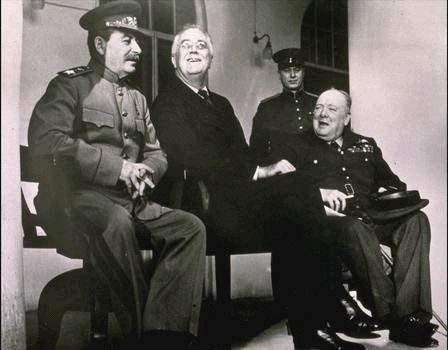
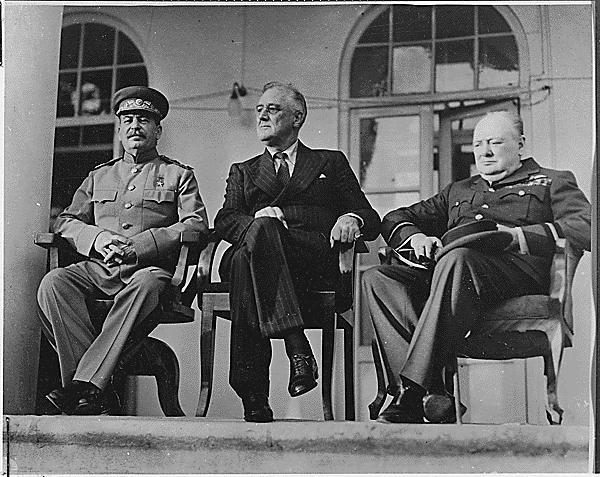
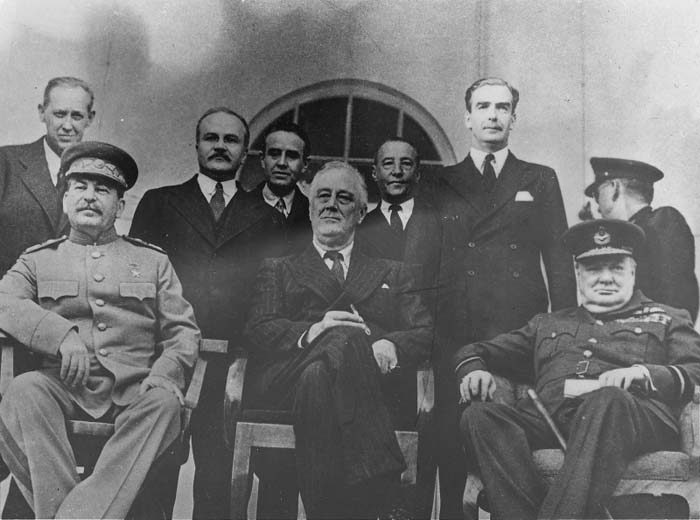 November 29, 1943, Tehran. Stalin, Roosevelt and Churchill. It is possible that one of these photos belongs to N. Vlasik.
November 29, 1943, Tehran. Stalin, Roosevelt and Churchill. It is possible that one of these photos belongs to N. Vlasik.
“On August 19, 1947, the Molotov cruiser under the command of Admiral I.S. Yumashev, accompanied by two destroyers, left the port of Yalta.
On board the cruiser, in addition to Comrade Stalin, were: A. N. Kosygin, who was invited by I. V. T. A. N. Kosygin, the commander of the Black Sea Fleet, Admiral F. S. Oktyabrsky, who was resting at that time in Yalta, and others. This trip made an unforgettable impression on me. The weather was great and everyone was in high spirits. Tov. Stalin, under the incessant greeting "Hurrah!" the cruiser bypassed the entire crew. The faces of the sailors were joyful and enthusiastic. Having agreed to the request of Admiral Yumashev to be photographed together with the personnel of the cruiser, Comrade Stalin called me. I ended up, one might say, in photojournalism. I already took a lot of pictures, and Comrade Stalin saw my pictures. But despite this, I was very worried, because I was not sure about the film.
Tov. Stalin saw my condition and, as always, showed sensitivity. When I finished shooting, having taken a few photos to guarantee, he called a security officer and said: “Vlasik tried so hard, but no one took him off. Take a picture of it with us." I handed the camera to the employee, explaining everything that was necessary, and he also took a few pictures. The photographs turned out very successful and were reprinted in many newspapers.
A series of photographs taken on August 19, 1947 by various authors. Some photos could have been taken by N. Vlasik:

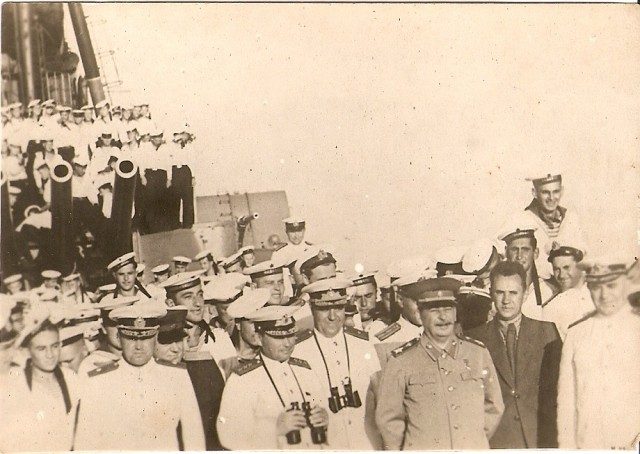
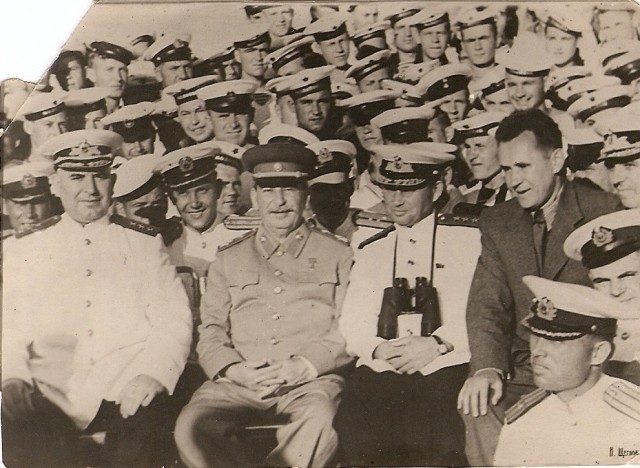
In the corner of the photo there is an inscription - N. Shcheglov. Most likely he is the author of the photo. 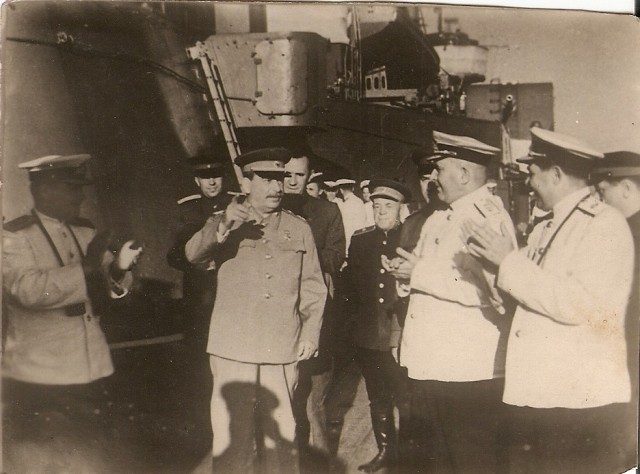
In this photo, the shadow of a photographer in a cap is visible on Stalin's trousers. Therefore, with a high probability we can say that the photo was taken by N. Vlasik. 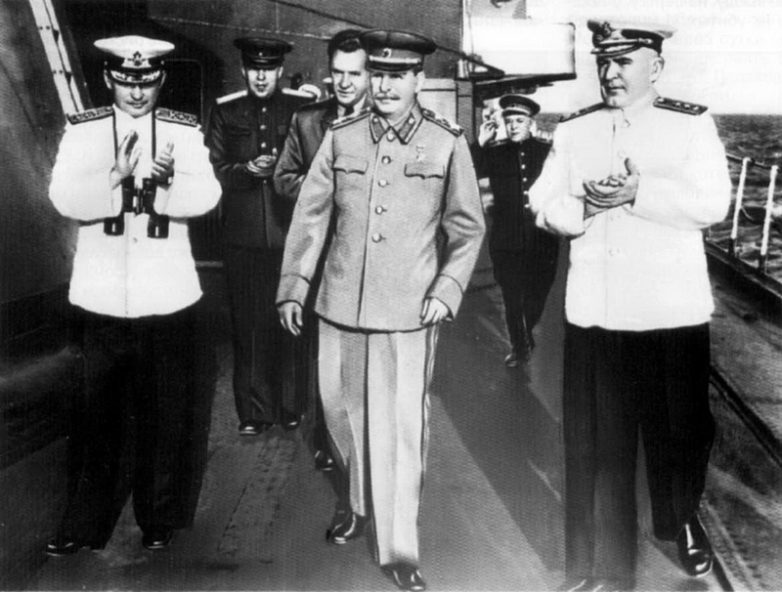
Another photo, as if a continuation of the previous picture. It can be assumed that the photo is also N. Vlasik. 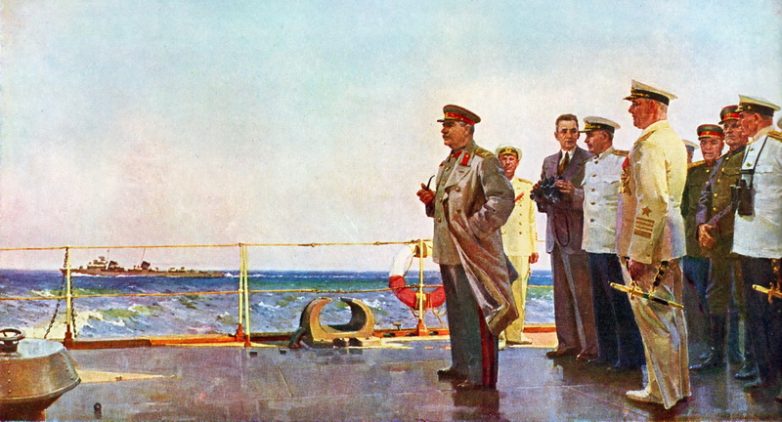 "For a snack", but past the topic - as usual, based on Stalin's majestic visits to something, court socialist realist artists wrote agitation. This time, the artist V. Puzyrkov wisely fussed.
"For a snack", but past the topic - as usual, based on Stalin's majestic visits to something, court socialist realist artists wrote agitation. This time, the artist V. Puzyrkov wisely fussed.
Fragments of the court session on January 17, 1955, mostly about Vlasik's passion for fixing Stalin's life:
…
The presiding judge, having opened it, announced that a criminal case was being considered on charges of Nikolai Sidorovich Vlasik of committing crimes under Article 193-17 p “b” of the Criminal Code of the RSFSR.
…
presiding. Defendant Vlasik, did you keep secret documents in your apartment?
Vlasik. I was going to compile an album in which the life and work of Joseph Vissarionovich Stalin would be reflected in photographs and documents, and therefore I had some data in my apartment for this.
…
I thought that these documents were not particularly secret, but, as I see now, I had to deposit some of them with the MGB. I kept them locked in the drawers of the table, and my wife made sure that no one climbed into the drawers.
…
Court member Kovalenko. Defendant Vlasik, show the court about your acquaintance with Kudoyarov.
Vlasik. Kudoyarov worked as a photojournalist back in the period when I was attached to the protection of the head of government. I saw him on the set in the Kremlin, on Red Square, I heard about him as a great photographer. When I bought myself a camera, I asked for a photo consultation. He came to my apartment. Showed how to handle the camera, how to shoot. Then I visited several times in the photo lab on Vorovskogo street
…
Court member Kovalenko. And what can you say about the fourteen cameras and lenses you had?
Vlasik. Most of them I received through my career. I bought one Zeiss apparatus through Vneshtorg, another apparatus was presented to me by Serov.
Court member Kovalenko. Where did you get the telephoto camera from?
Vlasik. This camera was made in Palkin's department especially for me. I needed it for filming I. V. Stalin from a long distance, because the latter was always reluctant to allow photography.
Court member Kovalenko. Where did you get your movie camera from?
Vlasik. The film camera was sent to me from the Ministry of Cinematography especially for the filming of I. V. Stalin.
Court member Kovalenko. And what kind of quartz devices did you have?
Vlasik. Quartz devices were intended for illumination during photo and filming.
…
Based on Art. 331 of the Code of Criminal Procedure of the RSFSR property discovered during a search in Vlasik’s apartment, such as: ... a movie camera No. 265, ..., cameras No. 102811 with a lens No. 1396, No. 16690, No. 331977, No. 2076368, No. 318708, No. 151429, No. 3112350, No. 1006978, No. 240429, No. 216977, Talbot camera, 14 different photo lenses, two quartz devices, ... indicated in the search report of December 17, 1952, Nos. 41, 42, 43, 46 and 47, ... - as acquired by criminal means - to withdraw and turn into state revenue.
To be continued…
Secrets of the life of the Kremlin celestials of the times of the great Stalin: night feasts, embezzlement of state property and love triangles.
- In general, she got into bed by force. Forcibly, both to Vlasik and to Beria.
But what was behind the elimination of the head of the leader's personal guard and other associates? Politics or male jealousy?
But this time he made a fatal mistake, he crossed the road to the owner himself. Private life of Comrade Stalin. When love becomes power, and power protects like love. Party intrigues, jealousy and revenge in the documentary series "The investigation was conducted ..." with Leonid Kanevsky. Love under the Kremlin stars. Watch right now.
Each fiery revolutionary had his mistress: Krupskaya with Lenin, Zhemchuzhina with Molotov, Ekaterina Davydovna with Voroshilov, Ashken Mikoyan, Zhenechka Vladun with Yezhov. These women often manipulated their husbands, influencing the politics of the entire state. Only Stalin was an exception and did not tolerate female power over himself. Maybe that's why he became a leader? At the top of power, everyone knows each other. Here, as in a village, there are love triangles, adultery, betrayal and even crimes based on love.



The investigation was conducted with Leonid Kanevsky Love under the Kremlin stars. (Start)
May 23, 1952. A black funnel flies through Moscow at night. Inside is a handcuffed man. It is impossible to recognize the once omnipotent General Nikolai Vlasik in him.
Nikolai Vlasik - head of the main security department of the USSR Ministry of State Security. Lieutenant general. For more than 20 years he was Stalin's personal bodyguard. Raised his son Vasily. The department, headed by Vlasik, provided protection for the entire leadership of the country.
Vlasik for many years led the guards of Stalin. He - one of the main close associates of the leader - had incredible power. And now the powerful general was arrested. During the search, Vlasik did not find anything interesting: personal belongings, documents. But the main value was here in notebook general. On 40 pages there are more than 100 women's names, addresses, phone numbers, short notes, the Bolshoi Theater, the circus, GUM, a restaurant and even a library. The security officer who arrested Vlasik immediately realized that this was not a list of informants. Stalin's bodyguard has long been known for his amorous exploits. But this time he made a fatal mistake. Crossed the road to the owner himself. Vlasik used his official position without hesitation. It was said that he even had an adjutant for heart affairs, who got gifts for the chief's chosen ones and resolved other delicate issues. The General did not like long courtship. In his pocket there was always a pack of free tickets to the Dynamo stadium. Football in the post-war period was the most popular sport. In the 50th year, the star of the great goalkeeper Lev Yashin rises. Vsevolod Bobrov and Igor Netto shine on the football fields. There are many young girls among the fans. After the match, Vlasik again goes to a country house, where a chic table has already been laid. Exquisite products are brought, on the personal orders of the general, not from a store or even from a special distributor, but directly from Comrade Stalin's kitchen. After all, Vlasik is not just the head of security. He is in charge of all the household of the leader. One day, Stalin accidentally saw an estimate for the maintenance of a nearby dacha in Kuntsevo. It turned out that 10,000 rubles were spent on one herring per year.
Herring - in the difficult post-war years, this fish replaced inaccessible trout and salmon on the tables of Soviet citizens. Naturally, under the herring was considered the most exquisite - the Atlantic from Norway. In free sale, this herring almost never met. One such jar was worth a third of the salary of the average worker. According to eyewitnesses, Stalin was furious when he learned that, according to documents, he ate 1,000 cans in a year. The father of nations shouted who ate the herring. I ate a herring? This power ate the herring. It seemed that the career, and, perhaps, the life of the head of security was over. But then Vlasik managed to avoid reprisal. After all, the anger of the leader fell upon the commandant of the nearby dacha Fedoseev. He was arrested and later shot. Fedoseev said during interrogations that Vlasik was going to poison Stalin. But the leader did not believe. And a few years later, Vlasik was first demoted, and then arrested for the approval of the owner. For what? The main version, the incredible suspicion of Stalin. He ceased to trust even the most devoted comrades-in-arms. But this is only part of the truth. General Vlasik knew perfectly well the real reason for his disgrace. It was a woman.
Olga Kuchkina: - It was a completely simple girl, plump, pretty, ruddy. Absolutely, of course, uncomplaining.
Stalin called her Valyusha. Long years Valentina Istomina was not only the housekeeper of the nearby dacha in Kuntsevo, but also the closest person to the leader. It was she, according to many Kremlin historians, who became the real reason for the collapse of the all-powerful General Vlasik. In the spring of 1952, an incredible thing happened at Stalin's nearby dacha. The crime. The victim was Valyusha Istomina.
- in general, she got into bed by force, by force, to both Vlasik and Beria.
In 1935, Vlasik himself chooses a 17-year-old graduate of a medical school, Valentina Istomina, to work at government dachas. A real Siberian, a blonde with blue eyes, similar to the artist Tselikovskaya, he liked her at first sight. Of the things Valentina Istomina has only a small bundle. It contains a change of linen, several notebooks with notes, a postcard with a portrait of Comrade Stalin and a shawl. At that time it was a very expensive thing. It's made from pure down and is super warm. In winter, it serves as a fur coat and a hat, and in summer, a pillow and a blanket for a girl. This shawl was destined to play a role in the fate of Comrade Stalin's future housekeeper.
In November 1935, waitress Valentina Istomina was transferred to work at a secret facility, Stalin's near dacha in Kuntsevo. Iosif Vissarionovich is not in a good mood. He has a severe cold. Stalin throws away the pills that doctors bring, he is afraid of poisoning. One day, Valentina plucked up the courage to offer her owner her shawl. The girl herself wrapped him up for the night, and in the morning a miracle happened. The disease has receded.
Soon the head of Stalin's security received a report about his employees. Vlasik had not seen his master so lively and happy for a long time. Only Stalin allowed Valyusha to bring tea in the evening. She just made the bed for him. By the way, according to the testimony of relatives, the leader rarely took a bath, but slept on fresh linen every night. Stalin calls his waiter affectionately - Valyusha, Valechka. Vlasik, who looked at her earlier with lust, is forced to retreat. Under the influence of this girl, Joseph Vissarionovich changed his oldest habits. Previously, Stalin could not stand new clothes, he wore old ones to holes. The ruler of one-sixth of the land wore simple soldier's underwear with a government brand. Now he began to put on expensive silk.
Stalin's dacha was often visited by a family friend, member of the Central Committee of the KPP, Abel Yunikidze. He has long annoyed party leaders with his excessive love of luxury and women. A relative of Stalin's first wife, Maria Svanidze, spoke of Unikidze with contempt. Unikidze also draws attention to Valya Istomina. The reaction is immediate. In 1935, Yunikidze was expelled from the party for political corruption in everyday life and exiled to Kharkov as the director of an automobile chair.



Love under the Kremlin stars. (the end)
This is a Cossack officer's checker of the 1910 model. With such a sword, the fighters of the first icon cut with the whites on the fronts civil war. It was with this sword that First Marshal Klim Voroshilov met the NKVD detachment, which came to arrest his wife. The Chekists armed with revolvers fled. Upon learning of this, Stalin laughed and ordered the Voroshilovs not to be touched anymore. Stalin regularly receives a report from the secret services about the moral decay of some leaders of the Soviet state. The leader is informed that during a search of the former People's Commissar of Internal Affairs Yegoda, almost 4,000 frivolous photographs and 11 films of completely obscene content were found. Many comrades openly cheat on their wives. Some have entire harems. The reports indicated the names of Avvakumov, Vlasik, Beria. Before the war, the wife of Stalin's personal secretary and the person closest to him, Poskrebyshev, was arrested and thrown into prison. Several times Poskrebyshev, who was in the rank of general on his knees, went into Stalin's office and, like a devoted dog, crawled to the Supreme's table, begging to let his wife out. But the leader was unshakable. It was not Comrade Stalin who arrested her, so it was not for him to let her go. 3 years later, it was Comrade Stalin who wrote the death sentence for Broneslava Posklebysheva. This paper was delivered to him by his personal secretary. In fact, the espionage charge against Poskrebysheva was fabricated by Beria. The woman, being a distant relative of Trotsky, tried to protect her relatives from repression. But Beria, to whom Broneslav turned for help, began to seek her. She refused. For which she paid with freedom and life.
Incredibly, after the death of his beloved wife, the personal secretary of Comrade Stalin, Voskhlebyshev, faithfully served the owner for several more years. During the war, Stalin spends a lot of time at a nearby dacha. His housekeeper Valyusha Istomina is always by his side. The leader became very attached to the girl. She gave him what he was deprived of family life with Nadezhda Aliluyeva: the comfort of a home, care and unconditional support.
Boris Ilizarov: - In general, in essence. About communism, about socialism. They talk about losses. A servant, a girl who is also a concubine.



Talented generals were worth their weight in gold during the war. But an affair on the side could even cost a head brilliant generals. A former student of the seminary, Joseph Dzhugashvili, often used to say that the family is the main unit of the state. He forgave amorous adventures only to the closest associates. The rest knew they would have to answer for adultery. In 1943, Rokosovsky, then still a general, was on a report with Comrade Stalin. Suddenly, the leader asked if Comrade Rokosovsky knew whose wife was the famous actress Serova. The general turned pale. At that moment, he must have felt one step to prison. And what a prison Rokosovsky knew firsthand. Cold and damp, daily expectations of executions. Before the war, the marshal spent 2 years in prison. He was accused of spying for Japan and Poland. But when the war began, they were unexpectedly acquitted. Actress Valentina Serova was not only a star of Soviet cinema. She was the wife of the poet Konstantin Simonov, the leader's favorite. The amorous adventures of Rokosovsky and Serova became the property of the whole people. Stalin personally decided to stop them. Rokosovsky understood Comrade Stalin's hint. The next day, the brilliant general left the love front without a fight.
1952 Stalin is seriously ill. At the party congress, he asks to be allowed to retire. But the delegates are against it. It was at this moment that he was informed that the faithful chosen one Vlasik encroached on Valya. His Valyusha, who became the closest person for the leader.
- And when Stalin found out about it, he completely. Well, you can understand by yourself how we see his character, what happened to him.
Stalin refuses to believe what happened. Valyusha is silent and only cries. In desperation, the leader orders the dismissal of the long-term head of his guard and remove him from sight. But then, unable to bear the orders, arrest.
From the minutes of the court session: “Defendant Vlasik, how often did you arrange immoral amusements with women? Answer: There were no sprees. I really cohabited with many women, drank alcohol with them. But all this happened at the expense of my personal health and in my free time from service. Question to the witness: What can you say on the merits of the case? Witness: Vlasik soldered me, and when I fell asleep he cohabited with my wife.
Andrei Sukhomlinov: - He was not convicted of embezzlement, embezzlement. For this he was removed from office.
The general is sent to the colony of the distant Ural city of Asbest as deputy chief. But then they are returned to Moscow, tried and sent into exile for 10 years. After 5 years, he will be released under an amnesty. But he will never return to the organs. A few days after the arrest of Vlasik, the security officers appear at Stalin's dacha in Kuntsevo. They order the rampart to assemble. Valyusha Istomina was given 5 minutes to get ready. She left the nearby dacha with the same bundle with which she came here 17 years ago. It contains a postcard and an aged, shabby shawl that once brought them together. On a black funnel, she was taken to the Lubyanka inner prison. In solitary confinement, the woman nearly went insane. For several weeks, she was never summoned for interrogation. Three times a day, the feeder was opened, an invisible guard silently passed a mug of boiling water, a bowl of gruel and a piece of bread. Istomin with things on the way out - the guard shouted. Finally the door opened. Probably, at that moment, Valentina thought about the worst thing, they would be shot now. But the prisoner was wrong. Her once beloved woman of Stalin, without trial or investigation, was sent into exile in the most terrible place of the Gulag. To Kolyma. Soon after the arrest of Valyusha, the leader is smashed by a blow. Stalin brings mountains of pills. He throws them out. There is no Valyusha nearby. Only from her hands he was not afraid to take medicine. Trusting no one, he sometimes locks himself in a room and cooks his own food.
Alexander Sosland: - By far, the most plausible diagnosis according to the current classification is paranoid personality disorder.
A few weeks later, the leader realizes that he cannot live without a faithful housekeeper. Valentina Istomina barely makes it to Kolyma when the order comes for her release. On a military plane, a woman is taken to Moscow and brought to a nearby dacha to Stalin.
- And then, when she returned, when they met, they both cried.
On the morning of March 1, 1953, Stalin was found lying motionless on the floor. On March 3, his children and closest associates gathered at the body of the leader. Everyone was silent. Only the inconsolable Valya Istomina sobbed loudly. The secret wife of the leader was the only one in a close circle who sincerely mourned the death of this man. After Stalin's funeral, Valentina Istomina was transferred to another facility. She never married, remaining faithful to the only man in her life to the end. She died in 1995, taking with her many secrets from the life of one of the most formidable rulers of the 20th century.
Written by Robert Rovnik and Alexander Zaletov
Stage director Boris Fedorov
Composer Igor Nazaruk
Host Leonid Kanevsky
Director Lolita Khalikova
Produced by Erika Galimurza and David Hamburg
TV channel: NTV
First broadcast date: September 29, 2006
- In contact with 0
- Google+ 0
- OK 0
- Facebook 0

